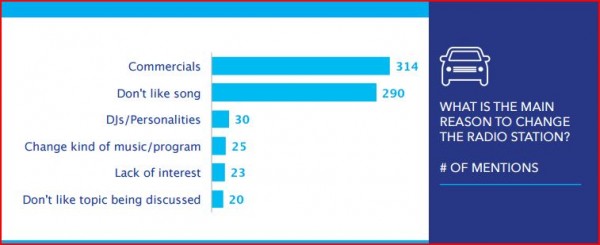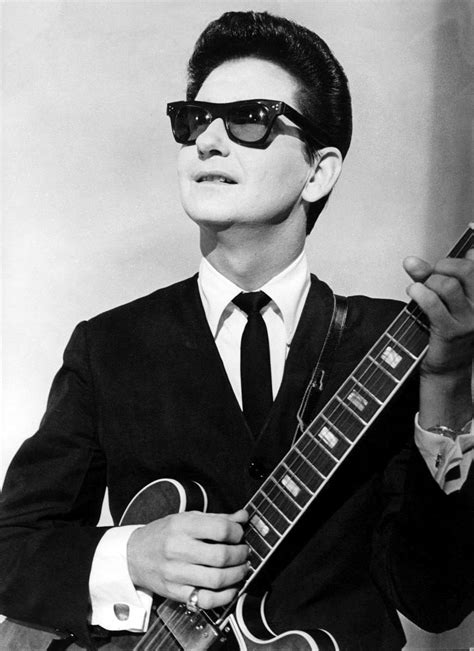By Radio Ink – April 7, 2016

It was less than two weeks ago many of you were part of a very lively discussion about how many commercials you should be playing on your radio station. We also debated just how successful an ad campaign could really be when a commercial is 6th or 7th in a long commercial pod. It appears Pandora has just been handed a wealth of data that contributes to the very real belief that you’re playing way too many commercials.
The folks at Pandora have quickly jumped all over Edison Research’s latest data about AM/FM listeners that change stations about 22 times per commute. Pandora has already published a white paper with Edison’s logo and data all over it. In the presentation (READ IT HERE) Pandora states “by a significant margin, the top two reasons for switching AM/FM are the commercials and to skip disliked songs.”
Pandora also claims that 7 out of 10 drivers report that they change the station when they are in the car and listening to AM/FM when commercials come on. If true, that would certainly be bad. After all, everyone knows that most listening is done in the vehicle and the radio industry often touts how important it is to connect with the consumer as he or she gets close to making a purchase. Pandora claims that 7-out-of-10 number was part of the Edison Research study, however we were not provided that data from Edison.
Hitting You Where It Hurts
Pandora asks what all this AM/FM channel changing means for your advertisers? In its presentation, Pandora says drivers know that radio stations often play 10 or more commercials in a row. “They also know they can avoid them with a simple push of a preset. Seven out of 10 commuters report they don’t listen to the full commercial break, and nearly half of them claim they don’t even last through the first commercial. But it’s not just the ads that are causing them to switch—it’s equally due to repetitive, unpersonalized playlists. And what happens when you combine repetitive playlists with a seemingly endless run of commercials? You get drivers who switch stations a lot—22 times in each direction of their daily commute. That’s 44 switches just going to and from work.”
Pandora, quoting the research from Edison, says commuters who listen to other forms of audio (such as streaming, satellite, or a personal music collection) only switch a fraction as much—just 9 times per commute. “Personalized audio in a low-clutter environment simply results in more driver attention.”
The final page of the presentation says, “When Pandora Plays Your Message Works.”
Read the full Pandora White Paper HERE and the latest Pandora blog on the subject HERE. Check out the Edison press release HERE. We requested the entire Edison report but were told it was proprietary and for clients only.
READ MUCH MORE BROADCAST NEWS HERE AT THE RADIO INK WEBSITE
http://radioink.com/category/news/









I’m a longtime Pandora user. It’s true. I don’t skip the Pandora commercials.
OK so, you don’t skip the Pandora ads. Never listened to Pandora which makes me wonder why…Are they great ads or do they stand alone? I think the answer must be that they must be brief stop sets. I’m no programer but, if Pandora were to become more popular, wouldn’t they feel pressure to either run more ads or increase the unit rates for the ads? In either case, is this not the same conundrum that terrestrial radio has faced FOREVER? Let me answer that for you…YUP!
I missed the “debate” about the effectiveness of being the 6th or 7th commercial. Here’s a news flash; that’s why multiple commercials need to run on a weekly basis to generate an effective AVERAGE frequency.
Anyone who has studied statics should know the first rule: question the statistic. In this case, I suggest that we question the source. While the motives must be obvious to even the most naive reader, I’d like to submit a few naive questions/observations of my own:
– Yes, there are more methods of delivering audio content. Who cares? What is important is the content that people seek. I’m pretty sure that 8 track tapes were gonna spell the end of radio as were cassette tapes, and CD’s….The point is CONTENT is still king.
– A little information (or should that be MISINFORMATION?) can be a dangerous thing. The research points to people changing stations 22 times per commute. What they don’t elaborate on is how many stations do they flip between? I’d find it very hard to believe that it would be more than a handful. A secondary question that I ponder is that people in the sample were monitored by in car video. Hummm…could the knowledge they were being recorded compelled any of those in the “sample” to behave in an abnormal manner?
– As a naive reader(or listener), I Googled Pandora to figure out that it’s a streaming service . One that apparently allows you to select the genre of music you prefer. Hmmm…how is this different from the playlist on my phone?
– The brilliant irony is the first article that popped up was how to eliminate ads from Pandora. Yup, all you need to do is upgrade your subscription and voila, no more of those pesky ads! Doesn’t sound like satellite radio in a way? How’s that working out?
Last time I checked, the strength of local radio is that it is local. This is the precise reason why advertisers continue to spend; because it works.
How about the ads that follow an obnoxious ad.
For example:
Every time I hear that ad from Spence Jewelry I changed the station and I usually don’t return for at least 5 to 10 minutes. This means all the ads that followed I did not listen to because of the obnoxious Spence Jewelry ad.
I’d like to see a study on how often this sort of thing happens.
Maybe before approving an ad for airtime radio stations should consider if the ad is going to irritate listeners enough for them to change the station.